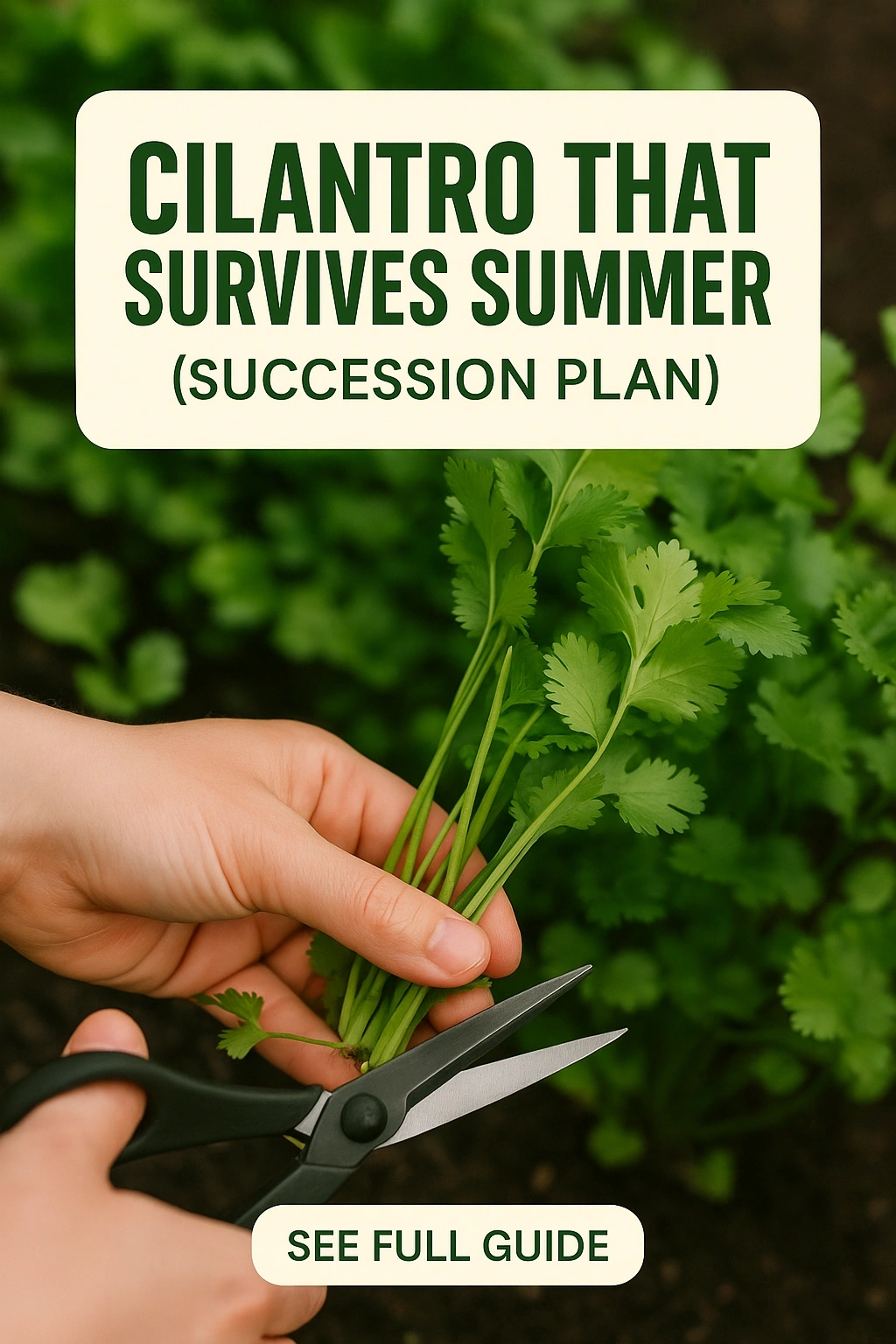
Cilantro is a beloved herb known for its unique flavor and versatility in various cuisines. However, cultivating cilantro through the hot summer months can be challenging due to its tendency to bolt in high temperatures. This article provides a comprehensive succession plan to help you grow cilantro successfully even during the summer, ensuring a steady supply of fresh leaves for your culinary needs. By implementing these strategies, you can enjoy the fresh taste of cilantro all season long.
Understanding Cilantro’s Growth Cycle
To create an effective succession plan, it’s essential to understand cilantro’s growth cycle and its response to environmental conditions. Cilantro (Coriandrum sativum) is a cool-season herb that prefers temperatures between 50°F and 85°F. When temperatures consistently exceed 75°F, cilantro is prone to bolting, which is the process of flowering and producing seeds. Once bolted, the leaves become bitter and lose their culinary value. Therefore, timing your planting is crucial for a successful cilantro harvest.
Creating a Succession Planting Schedule
A well-structured succession planting schedule is vital for ensuring a continuous supply of cilantro. The key is to plant cilantro seeds at intervals throughout the growing season. This method will allow you to harvest cilantro at various stages, maximizing yield and minimizing losses due to bolting.
Timing Your Planting
Start by determining your local growing season. Generally, cilantro prefers to be sown in early spring and again in late summer for a fall crop. Here’s a simple schedule to follow:
- Early Spring Planting: Sow seeds 2-4 weeks before the last frost date.
- Mid-Spring Successions: Continue sowing every 3 weeks until temperatures rise.
- Late Summer Planting: Plant seeds 8-10 weeks before the first expected frost for a fall harvest.
Choosing the Right Varieties
Selecting the appropriate cilantro variety can impact your success in growing this herb during the summer months. Some varieties are bred specifically for higher heat tolerance and slower bolting. Look for these heat-resistant cilantro varieties to increase your chances of a successful harvest.
Recommended Cilantro Varieties
- Slow Bolt: This variety is bred to resist bolting, making it ideal for warmer climates.
- Calypso: Known for its robust flavor and slower growth, this variety is perfect for summer planting.
- Leisure: A reliable choice for gardeners in hotter regions, it maintains flavor even under stress.
Optimal Growing Conditions
To support cilantro’s growth and delay bolting, it is essential to provide optimal growing conditions. Cilantro thrives in well-drained soil with plenty of organic matter. Additionally, ensuring adequate moisture and protection from extreme heat will help maintain healthy plants.
Soil and Water Requirements
Here are some tips to improve your cilantro’s growing conditions:
- Soil Preparation: Amend soil with compost or well-rotted manure to enhance fertility.
- Watering: Keep the soil consistently moist but not waterlogged; deep watering is preferable.
- Mulching: Apply a layer of mulch to retain soil moisture and regulate temperature.
Managing Temperature and Light
Since cilantro is sensitive to heat, managing the temperature and light exposure is crucial. Providing some shade during the hottest parts of the day can help extend the lifespan of your plants and keep them productive.
Implementing Shade Techniques
- Shade Cloth: Use shade cloth to reduce direct sunlight exposure during peak hours.
- Interplanting: Grow taller plants nearby to provide natural shade.
- Row Covers: Use lightweight row covers to protect young plants from extreme heat.
Pest and Disease Management
Maintaining healthy cilantro plants involves proactive pest and disease management. Pests such as aphids and spider mites can hinder growth, while diseases like downy mildew can affect leaf quality. Familiarizing yourself with common issues can help you take preventive measures.
Effective Management Strategies
- Regular Monitoring: Check plants frequently for signs of pests or diseases.
- Natural Predators: Encourage beneficial insects like ladybugs to help control pest populations.
- Organic Treatments: Use neem oil or insecticidal soap to manage infestations without harming your plants.
Harvesting and Storing Cilantro
Knowing when and how to harvest cilantro is crucial for maintaining its flavor and quality. Harvesting at the right time not only prolongs the life of your plants but also ensures the best taste in your dishes.
Harvesting Techniques
Follow these tips for effective harvesting:
- Harvest Early: Cut leaves when they reach about 6 inches in height for optimal flavor.
- Use Sharp Scissors: Snip leaves rather than tearing them to avoid damaging the plant.
- Regular Harvesting: Regularly removing leaves encourages new growth and delays bolting.
FAQs
Can cilantro grow in hot weather?
While cilantro prefers cooler temperatures, it can grow in hot weather with proper care, such as providing shade and regular watering.
How often should I water cilantro in summer?
During the summer, cilantro should be watered consistently, about once or twice a week, depending on rainfall and soil moisture levels.
What can I do if my cilantro bolts?
If your cilantro bolts, you can still use the leaves before they become too bitter, or you can allow it to flower and collect seeds for future planting.
How long does cilantro take to grow?
Cilantro typically takes about 3 to 4 weeks to grow from seed to harvestable size, depending on the growing conditions.
Is it possible to grow cilantro indoors during summer?
Yes, cilantro can be grown indoors in containers with adequate light and ventilation, making it a great option for year-round cultivation.
Conclusion
Growing cilantro through the summer months requires careful planning, the right variety selection, and attention to growing conditions. By understanding its growth cycle and implementing a succession planting strategy, you can enjoy fresh cilantro throughout the warm season. With the tips provided in this article, you are well on your way to cultivating a thriving cilantro garden that survives summer challenges.
